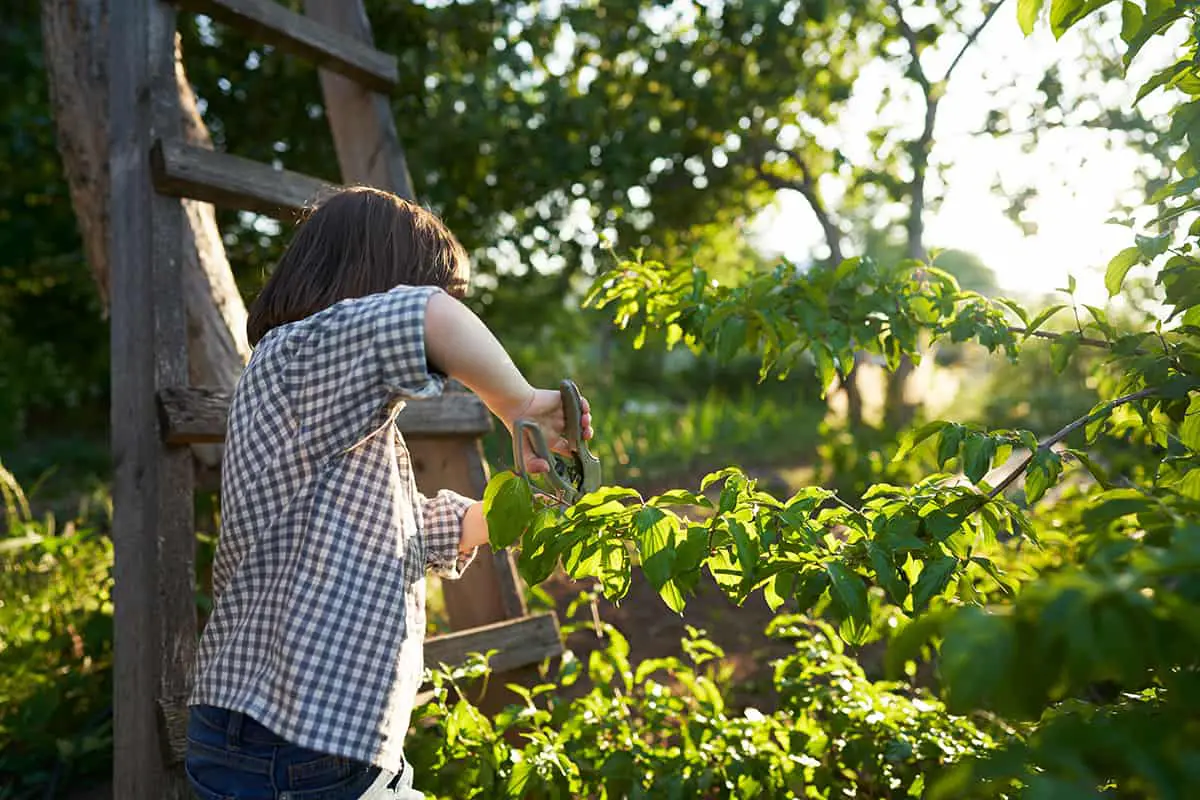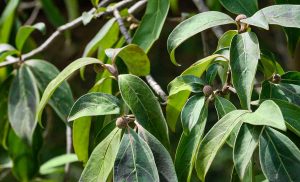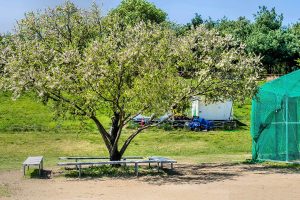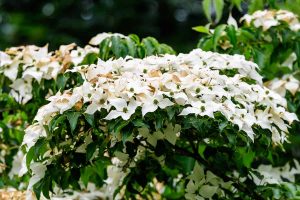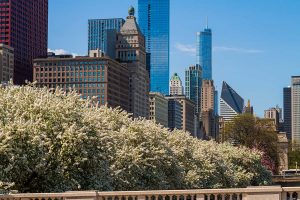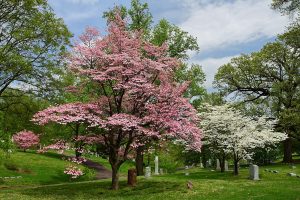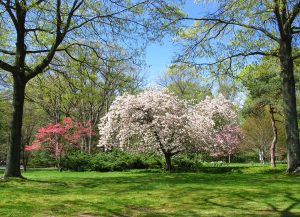You shouldn’t need to prune a dogwood (Cornus sp.) to maintain its shape and size since this plant has a natural growth habit that holds a neat and tidy shape.
However, there are some instances where pruning a dogwood tree will be beneficial to its health and to your enjoyment of the tree.
Table of Contents
Benefits of Pruning Dogwood Trees
Improve Air Circulation
Many dogwood trees are vulnerable to diseases that are caused by fungal pathogens, and this is exacerbated in instances where there is a lack of proper airflow between branches and foliage. Fungal diseases thrive when there is overcrowding on a plant because they love moist and humid environments.
If your dogwood tree has good air circulation, then you can greatly reduce the likelihood of the tree being affected by a fungal infection, because when air can circulate properly, it will allow the leaves to dry out. This is especially important if you live in a humid climate or you experience frequent summer rainfall.
To improve the airflow around crowded dogwood trees, you can prune them in a way that thins out the canopy. Focus on removing the weaker, thinner branches, and work your way around the tree so that the canopy still looks even.
Improve Usability
If there are low-hanging branches on your dogwood tree, this can negatively affect how you use the tree. Low-hanging branches can get in the way of mowing the lawn beneath the tree, or they might present a hazard to children running around in the garden.
Low-hanging branches can also prevent you from enjoying the shade beneath the tree. Simply prune these off as and when you notice them by using a pair of sharp secateurs.
Save Energy
Most dogwood trees can also be grown as shrubs, and they do this by sending out suckers around the base of the plant. If you want to maintain the tree shape with a singular trunk, these suckers will need to be pruned back. This is not only useful for maintaining a neat and tidy look, but it also aids the health of the dogwood tree.
Producing suckers requires energy that could be put to better use elsewhere, for example, in the making of flowers or more lush foliage. When the suckers are pruned, the energy they were using will be redirected to other parts of the tree where it will be more beneficial.
Discourage Pests
Sores or areas of damage on a dogwood tree can encourage pests to take hold. These weakened parts provide an invitation to pests which can result in severe infestations. To avoid this situation, look out for any branches that are rubbing up against each other, and prune these away so that damage will be limited.
Remove Damage
Branches of dogwood that are damaged, dead, or diseased should always be pruned away as soon as they are spotted. This is necessary to maintain the health of the tree, as well as keep it looking its best.
Improved Shape
Dogwoods typically grow in a naturally attractive shape, which may be rounded, conical, or column-like. However, if you have some straggling branches which are sticking out or hanging low, then pruning the dogwood will help to maintain a neater shape.
Brighter Color
Hard pruning dogwoods which have colorful stems, is a good way to rejuvenate the plant and bring out brighter fall and winter colors. This is recommended for dogwood shrubs which are grown for their year-round interest.
Best Time to Prune Dogwood Trees
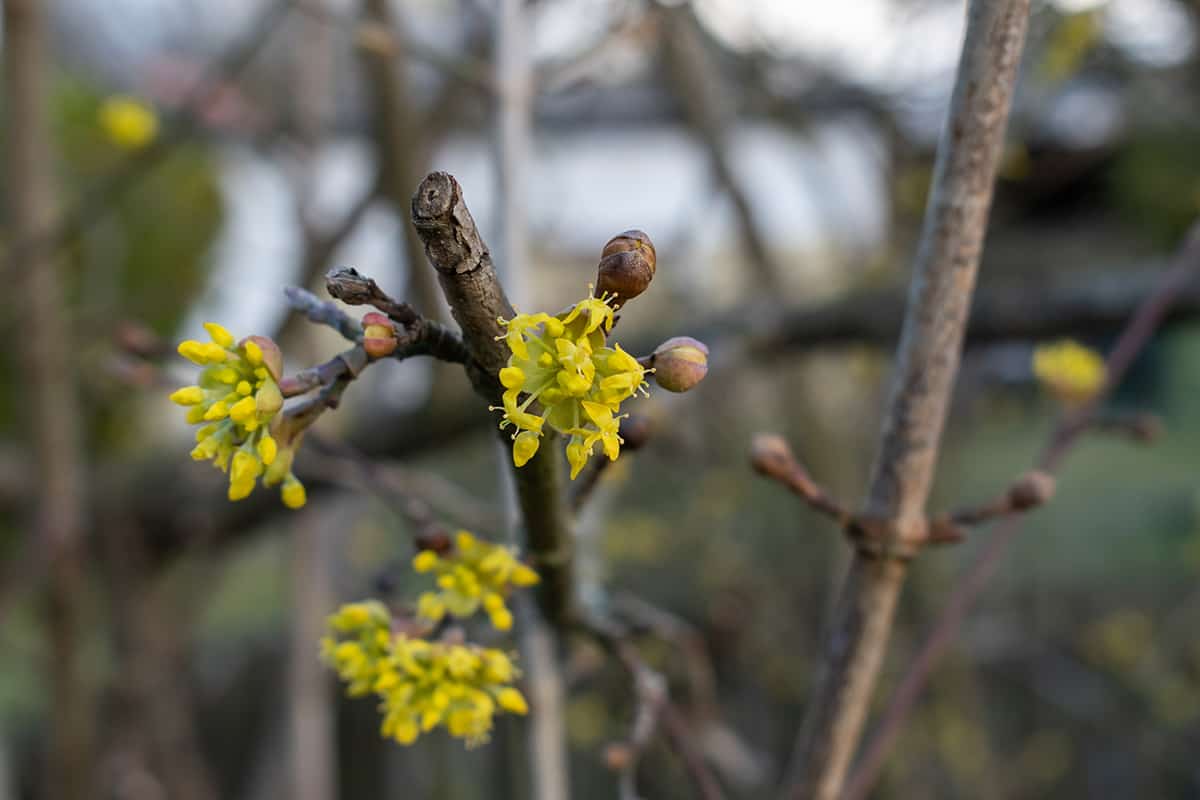
The best time to prune a dogwood tree depends on why you are pruning it. If the dogwood tree is suffering from disease or damage, then you should prune away the affected branches immediately, regardless of the time of year. However, if you are pruning the tree to maintain its shape or to thin out the branches and let sunlight in, then the best time of year to do this is when the tree is dormant.
Dogwood trees enter their dormant phase in late fall through winter, so this is the ideal time to prune. If you prune a dogwood tree when it is in its active growth phase, in spring or summer, then it will ooze out large amounts of sticky, wet sap. This mess can be easily avoided by pruning the tree when it is dormant.
If you live in an area where wood-boring insects are prevalent, then the dogwood should never be pruned in the spring. Pruning the tree creates wounds where boring insects will enter the wood, to devastating effects.
Do Dogwood Shrubs Need Pruning?
Dogwood shrubs do not need to be pruned; however, if you have a dogwood shrub that you are growing for its spectacular fall and winter color, then it is recommended that you hard prune it annually.
Hard pruning a shrub is known as ‘stooling’, and this is a practice that is known to produce more vibrant color in shrubs with colorful stems, such as the Bloodtwig Dogwood (Cornus sanguinea), the Red Twig Dogwood (Cornus sericea) and some varieties of the Tatarian Dogwood (Cornus alba).
Best Time to Prune Dogwood Shrubs
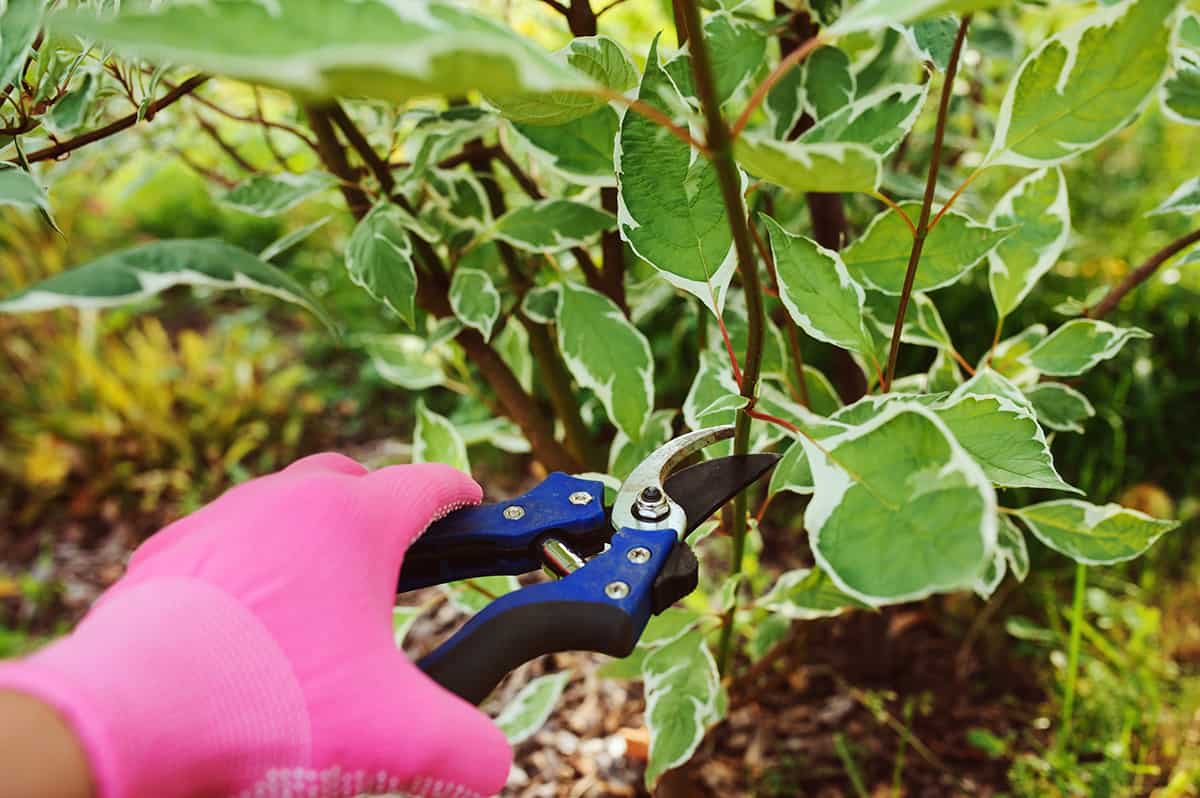
Hard pruning of a dogwood shrub can be done anywhere from February to the middle of April. In February and March, the new growth will not have yet started to develop, as the plant will be in its dormant phase, so this is an ideal time to prune.
However, during these months, the bare twigs of the shrub are still bright and attractive, so if you want to enjoy them for longer, then you can put off pruning right back until mid-April. By this time, some new growth will be starting to emerge, but it will quickly regrow after being hard pruned.
How to Prune a Dogwood Shrub
Young dogwood shrubs should not be pruned at all since this can cause them to weaken. Instead, leave them to establish themselves for a few years and develop strong root systems. Once the dogwood has been in the ground for two or three years, you can begin to perform annual hard pruning sessions on it.
To do this, use a sharp and clean cutting tool, and prune the entire shrub down to around 6 or 8 inches from the ground. It is at this level that the dogwood should be starting to branch out. The plant will quickly regrow to its full height, and the new stems will be bolder and brighter than those you pruned away. This can be repeated at the same time every year, or you can perform the hard pruning bi-annually.
